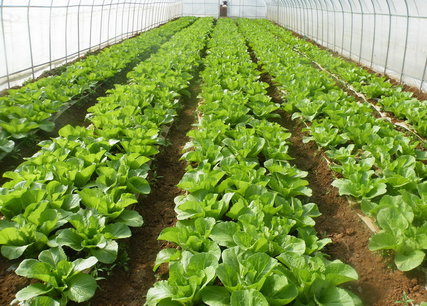Once the vegetables are subjected to freezing damage, the growth is inhibited, such as the greenhouse temperature of the strawberries is lower than
Clear snow: In the event of a snow or ice disaster, it is necessary to remove snow from the greenhouse in time to prevent the greenhouse from being crushed.
Multi-layer cover: Add a small arch shed in the shed, cover the cold insulation at night, and remove the cover during the day to increase the light.
Moderate ventilation: Due to long-term closed management, low temperature, high humidity, and illuminating in the shed, after snow or continuous cloudy days, it is necessary to timely and moderately shade and gradually expose the shed to prevent the plants from “sparkling†due to sudden loss of water.
Control watering: Control watering or floor covering, which can reduce the humidity of the air in the shed, maintain and increase the ground temperature, and improve the light transmission condition of the shed film.
Reasonable fertilization: appropriate control of nitrogen fertilizer, application of organic fertilizer and phosphorus and potassium fertilizer, for unharmed or lightly damaged vegetables, spray 2~3 times 0.2% potassium dihydrogen phosphate solution as appropriate, yellowing and nitrogen deficiency Plants can also be sprayed 2 to 3 times with 0.3% urea solution.

Fat damage
In the closed management of vegetable greenhouses, excessive application of nitrogen fertilizer, compound fertilizer with high nitrogen content and unfertilized organic fertilizer, ammonia or nitrite gas is most likely to occur when soil is not covered or not covered in time after application, and when it is not ventilated in time. Toxic. After being smoked by ammonia, water-stained plaques or spots appeared in the middle and lower leaves of the plant, and then turned yellow-brown until it died; after the flowering period, the flowers fell, the fruit fell or the flower buds died. Under acidic or low temperature conditions, the accumulation of nitrite in the soil is prone to nitrite gas poisoning. The main symptoms of the affected crops are water-spotted spots between the leaf margins or veins, which quickly turn green and turn yellow-yellow or yellow-white. Only the veins are green, and even the whole leaves die. Take corresponding measures according to the causes of the damage:
Rational fertilization: rational fertilization according to soil characteristics and crop requirements is the fundamental measure to prevent and control various fertilizers, especially nitrogen fertilizer. The amount of one-time fertilization should not be too large. After the application of the base fertilizer, it is necessary to cover the soil or mix it with the soil in time; the top dressing should be applied to the soil after deep application or timely irrigation after application, and generally it should not be scattered on the surface.
Timely ventilation: especially after fertilization in early spring, it is prone to poisoning of harmful gases. Once it occurs, it is necessary to improve ventilation conditions and discharge harmful gases in time.
Application of slow-release fertilizer: the application of organic fertilizer, organic-inorganic compound fertilizer, slow-release fertilizer, controlled-release fertilizer and other nutrients slowly released fertilizer helps to avoid the generation of harmful gases.
Inhibition of nitrous acid gas production: prevention of soil acidification and proper application of nitrification inhibitors can inhibit the production of nitrous acid gas.
Pests and diseases
The high-humidity, low-temperature and oligo-smooth produced by the closed management of vegetable greenhouses in spring provide favorable conditions for the breeding of pests and diseases. Therefore, comprehensive prevention and control should be carried out. Strengthen field management: control watering, and moderately ventilate at noon on sunny days to reduce humidity in the shed, improve light and enhance carbon dioxide supply; implement formula fertilization, properly control nitrogen fertilizer, strengthen plants, improve crop disease resistance; timely remove disease Leaves, diseased branches, diseased fruit, and brought to the field, centralized treatment.
Improve the planting conditions: In the high-humidity greenhouse, high ridge and narrow shovel can be carried out, and the three ditch can be cultivated. In the greenhouse of intensive management, the dark plastic film can be used to cover the ground inside the shed. These measures can make the ground insulation, dehumidification in the shed, and eliminate or destroy the conditions for the breeding of pests and diseases.
Do a good job in monitoring and forecasting pests and diseases, and timely carry out chemical control: cucumber diseases in greenhouses mainly include downy mildew, gray mold, and blight; tomato diseases mainly include gray mold and late blight; eggplant diseases mainly include brown streak and cotton blight. The insects in the greenhouse are mainly aphids and whitefly, and there are also pests such as mites that harm the eggplant. Monitor and forecast well to prevent major losses. There are many types of pesticides for controlling pests and diseases in greenhouse vegetables, and high-efficiency, low-toxic and low-residue pesticides are generally used.
Organic ginger powder is made from air-dried ginger root. Ginger is a flowering plant whose rhizome, ginger root, or simply ginger, is widely used as a spice or folk medicine. Ginger is one of the most commonly used spices in cooking and can be used in salty and sweet dishes all over the world. It creates great warmth and flavor in dishes, but it is also combined with Ayurvedic therapy to relieve colds, sore throats, and coughs. It also has analgesic, sedative, anti-inflammatory, and antibacterial effects. Ginger also contains a variety of vitamins and minerals such as pyridoxine, pantothenic acid, potassium, manganese, copper, and magnesium. As a result, it is related to reducing nausea, and studies have shown that migraine can be reduced.
Ginger Powder,Organic Ginger Powder,Organic Ginger Extract,Ginger Extract Powder
Organicway (xi'an) Food Ingredients Inc. , https://www.organicwayinc.com